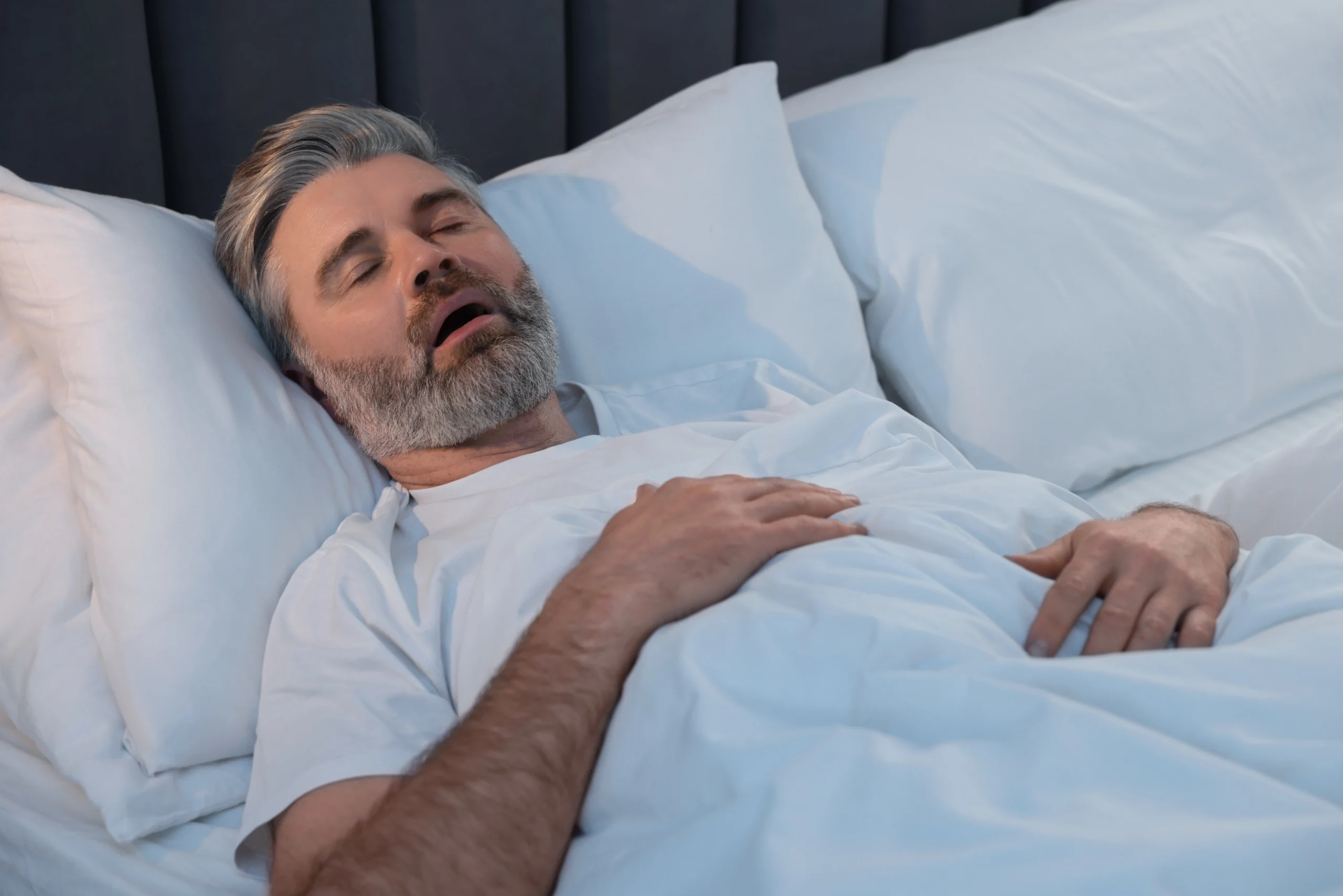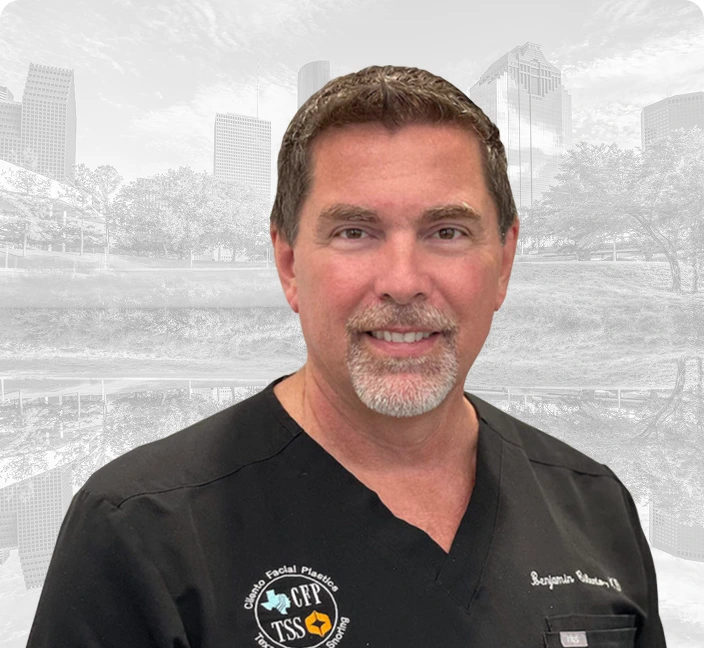Key Takeaways
- Sleep apnea is a prevalent sleep disorder that can lead to serious health issues if left untreated.
- Common symptoms include loud snoring, pauses in breathing during sleep, and excessive daytime sleepiness.
- Diagnosis typically involves a sleep study, which can be conducted either in a laboratory or at home.
- Treatment options range from lifestyle changes and breathing devices to surgery, depending on the severity of the condition.
- Early screening and treatment can significantly enhance sleep quality and overall health.
Why You Can’t Afford to Ignore Sleep Apnea
Sleep apnea isn’t just about snoring or feeling tired. It’s a serious condition that can lead to high blood pressure, heart disease, and memory problems if left untreated. It can affect your performance at work or school, strain your relationships, and even endanger your safety while driving. That’s why it’s crucial to act when you suspect something is wrong with your sleep.
What Is Sleep Apnea?
Sleep apnea occurs when your breathing repeatedly stops and starts during sleep. The two primary types are:
Obstructive Sleep Apnea (OSA): The more common form, caused when throat muscles relax excessively and obstruct the airway.
Central Sleep Apnea: This occurs when the brain fails to send proper signals to the muscles responsible for controlling breathing.
In OSA, the airway narrows or closes during inhalation, causing breathing to stop for 10 seconds or more. The brain briefly wakes you to reopen the airway, although these awakenings are so short that they’re often forgotten.
Signs You Might Have Sleep Apnea
Common symptoms of sleep apnea include:
- Loud snoring that disturbs others
- Gasping for air during sleep
- Morning headaches
- Waking up with a dry mouth
- Insomnia or restless sleep
- Excessive daytime sleepiness (hypersomnia)
- Difficulty focusing while awake
- Irritability
Finding Sleep Apnea: Testing and Diagnosis
Self-Assessment: When to Seek Help
Before seeing a doctor, you can perform a self-assessment:
- Do I snore loudly enough to disturb others?
- Do I often feel tired, even after a full night’s sleep?
- Has anyone observed that I stop breathing during sleep?
The Role of Sleep Studies
A sleep study, also known as a polysomnogram, is a standard method for diagnosing sleep apnea. It can be performed in a lab or at home. The study monitors brain wave activity, heart rhythm, breathing patterns, and other vital functions during sleep.
What Happens After Diagnosis?
Once diagnosed, you and your doctor will review your sleep study results, which typically include the Apnea-Hypopnea Index (AHI). This index measures the number of breathing disturbances per hour and helps determine the severity of sleep apnea:
- AHI of 5-14: Mild sleep apnea
- AHI of 15-29: Moderate sleep apnea
- AHI of 30 or above: Severe sleep apnea
Next Steps: Treatment Planning
Treatment options vary depending on the severity of your condition:
- Lifestyle changes: Weight loss, changing sleep positions, and avoiding alcohol can reduce symptoms.
- Breathing devices: Continuous Positive Airway Pressure (CPAP) machines are commonly prescribed.
- Oral appliances: These devices maintain an open airway by positioning the jaw.
- Surgery: In severe cases, surgical options like uvulopalatopharyngoplasty (UPPP) may be recommended.
USPSTF Recommendations for Sleep Apnea Screening
What Is the U.S. Preventive Services Task Force (USPSTF)?
Evidence Review
When reviewing the data on sleep apnea, the USPSTF found inadequate evidence to determine the benefits or harms of routine screening in individuals who do not report symptoms. Studies often vary in quality, and many rely on self-reported symptoms such as observed apnea, daytime sleepiness, or sleep arousals rather than standardized population-wide testing. While supporting evidence suggests that diagnosis and treatment can help patients with clinically significant symptoms, the research does not clearly establish that screening asymptomatic adults improves long-term outcomes. This gap highlights the complexity of translating clinical findings into broad preventive guidelines.
Recommendations
Life with Sleep Apnea
Frequently Asked Questions
How common is sleep apnea?
Can children have sleep apnea?
Is sleep apnea only related to overweight individuals, or are there some other risk factors?
Are there long-term health risks?
How do continuous positive airway pressure (CPAP) machines help relieve obstructive sleep apnea?
What is the Wisconsin Sleep Questionnaire (WSQ)?
Schedule a Consultation Today!
By addressing your sleep apnea and sticking to the recommended treatment plan, you can improve your sleep quality and reduce the risk of serious health complications.
ACT NOW! GET A FREE CONSULTATION – TODAY ONLY!
CALL US NOW AT 346-413-9313
Don’t miss this exclusive opportunity to get professional advice and begin your journey towards a new, confident you. Texas Sinus and Snoring dedicated team is ready to help you achieve the results you’ve always wanted. Contact us today to schedule your free consultation and take the first step towards a better, more confident you!
Ready to Breathe Freely Again?
Conclusion
Sleep apnea is more than just disrupted rest. It is a sleep disorder characterized by repeated interruptions in breathing that can have wide-ranging effects on health. Research has shown that individuals with a higher body mass index face increased risk, and untreated cases are linked to multiple adverse health outcomes, such as cognitive impairment, coronary heart disease, congestive heart failure, and metabolic syndrome. According to the U.S. Department of Health and Human Services, recognizing common clinical signs, such as loud snoring, pauses in breathing, and leg movements during sleep, is essential for timely diagnosis. In many cases, upper airway abnormalities or nasal obstruction contribute to the condition, which explains why treatment often goes beyond lifestyle changes.
While clinical prediction tools can help identify those at risk, the USPSTF has found insufficient evidence to recommend universal screening in asymptomatic adults. Nevertheless, most primary care clinicians rely on patient-reported symptoms and diagnostic studies to guide care. Treatment options may include mandibular advancement devices, CPAP therapy, or surgical interventions for individuals with severe or persistent cases. For patients who struggle with standard treatments, alternative therapies may also be considered. Some improvements in sleep apnea have been observed after bariatric surgery, underscoring the role of weight management in care.
Ultimately, sleep apnea can significantly decrease quality of life and necessitate proactive management. Whether through breathing devices, lifestyle adjustments, or specialized procedures, early recognition and treatment are crucial steps toward better health and restorative sleep.




